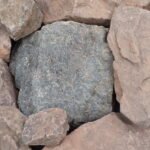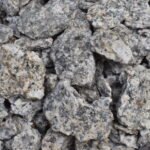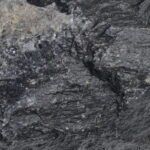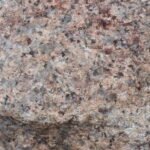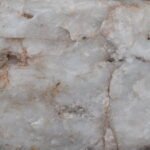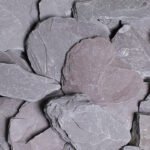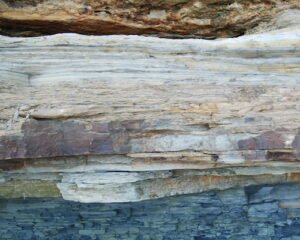
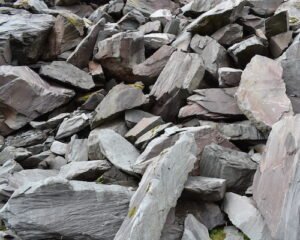
All the components needed to form pottery glazes can be found in the minerals of rocks. Silica, to form the glass, alumina and a whole range of fluxes to help melt the silica, including potassium, sodium, calcium, magnesium and lithium.
It's at this point that I need to emphasise the importance of respect for the environment, the rocks themselves, and the law when collecting your own materials. I only collect fallen pieces of rock, never hacking into rock faces, having obtained permission from the landowner(s) to do so. Please see my book for more information.
Once collected. these rocks need crushing and grinding into fine powder, so that they can be used in pottery glazes. It is possible to do much of this by hand, but some machinery is required and a bit more makes the process far easier. Some rocks, with crystalline quartz present in their matrix, can be heated in a kiln to above red heat, where the discordant expansion and contraction of the quartz weakens the whole structure, making it crumble. Other rocks have to be broken up by hand. Once the rocks are reduced to gravel they need to be broken down to grit (that will pass through an 8 mesh sieve). This can be done by hand with a steel mortar and pestle (as I used to do) or a lot more quickly with an electric hammer mill. Finally the grit is ground down to fine dust with the use of a ball mill.
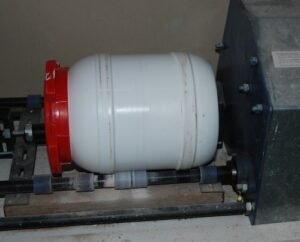
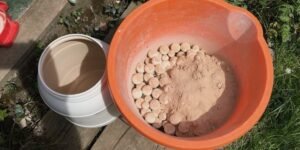
A ball mill is like a large stone tumbler polisher: a jar rotating on a pair of rollers with an adjustable speed. Inside the jar are high density alumina balls (or quartz pebbles) along with the rock grit. As the jar rotates, the balls cascade over each other nipping the rock grit as they hit. Generally between 3 and 5 hours is enough to grind 8 mesh rock grit down to <60 mesh dust.
